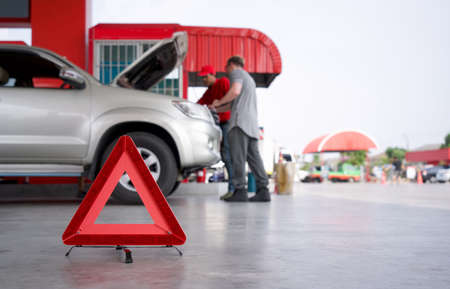Understanding Emergency Scenarios in India
India’s diverse landscape, rapid urbanisation, and unique climatic conditions present a wide array of emergency scenarios that challenge both urban and rural communities. In metropolitan cities like Mumbai, Delhi, or Bangalore, road accidents are unfortunately frequent, with high population density and fast-paced traffic contributing to the risks. Monsoon flooding is another recurring crisis, especially in low-lying city areas as well as rural villages where drainage systems are often inadequate. Each year, heavy rainfall disrupts daily life, damages infrastructure, and increases the risk of water-borne diseases. Urban fires—whether in crowded markets or residential complexes—pose significant threats due to congested living spaces and limited access for fire services. While these emergencies impact everyone, their effects are felt differently: urban centres may have quicker access to emergency services but face challenges like traffic congestion and overburdened hospitals; in contrast, rural communities often struggle with limited healthcare facilities and delayed response times. Understanding these varied crisis situations is the first step toward effective preparedness for all Indians.
2. What Belongs in a Basic First Aid Kit for Indian Households
Building a first aid kit tailored for Indian households is essential, especially considering India’s diverse climate, common health concerns, and the need to opt for eco-friendly solutions. The right kit not only prepares families for emergencies but also supports local sustainability efforts.
Essential Items for Indian First Aid Kits
| Item | Purpose | Sustainable Alternative |
|---|---|---|
| Sterile Gauze Pads & Bandages | To cover wounds and prevent infection | Organic cotton pads or bamboo fibre bandages |
| Antiseptic Solution (e.g., Dettol/Savlon) | For cleaning cuts and wounds | Neem-based herbal antiseptic or homemade turmeric paste |
| Adhesive Tape/Plasters | Securing bandages in place | Pla-based biodegradable tape or cloth strips |
| Cotton Wool/Balls | Cleaning wounds, applying ointments | Organic cotton wool (locally sourced) |
| Thermometer (Digital/Mercury-free) | Measuring body temperature during fever/illness | Solar-powered digital thermometer |
| Oral Rehydration Salts (ORS) | Treat dehydration, common during heatwaves or diarrhoea outbreaks | Homemade ORS (salt, sugar, clean water) |
| Pain Relievers (Paracetamol/Ibuprofen) | Reduce pain and lower fever; choose age-appropriate doses | Ayurvedic alternatives like tulsi or ginger powder (with caution) |
| Tweezers & Scissors (Stainless Steel) | Removing splinters, cutting bandages or tape | Reusable stainless steel tools instead of plastic ones |
| Aloe Vera Gel/Skin Soother | Treat burns or insect bites; soothe skin irritation common in Indian summers | Fresh aloe vera leaf gel from home plants or community gardens |
| Gloves (Latex-Free) | Protects caregiver while treating injuries; important during monsoon infections spread period | Biodegradable gloves made from plant-based materials |
Additional Recommendations for India’s Climate & Needs:
- Mosquito Repellent: Natural options like citronella oil or neem oil are safer for regular use and reduce chemical exposure.
- Sunscreen: Look for mineral-based sunscreen to protect against harsh sun and UV rays prevalent across India.
- Cough Syrup & Inhalers: Useful in areas prone to air pollution or seasonal flu.
Sourcing Locally & Reducing Waste:
Select reusable containers to store kit items, refill supplies from local pharmacies, and dispose of medical waste responsibly. Whenever possible, choose products with minimal packaging to minimize environmental impact—every small step counts toward a greener India.
![]()
3. Role of First Aid in Immediate Response
In the vibrant and densely populated cities of India, emergencies can occur at any moment—be it a sudden road accident near Connaught Place or a kitchen mishap during Diwali preparations. Immediate action can make all the difference between a manageable situation and a critical one. Having a well-stocked first aid kit at home, in the office, or even tucked in your scooter is not just good practice—it’s a necessity for urban living.
The Power of Timely Intervention
Responding swiftly in the first few minutes after an injury or health crisis is crucial. Quick actions like cleaning wounds with clean water, applying a bandage, or offering basic CPR can stabilise the patient until professional help arrives. In Indias busy localities, where ambulances may be delayed due to traffic congestion or narrow lanes, these first steps are vital.
Indigenous Home Remedies: Wisdom Passed Down Generations
Indian households have long relied on age-old remedies—turmeric for minor cuts, honey for burns, and tulsi leaves for soothing coughs. While these indigenous solutions reflect our cultural wisdom and resourcefulness, it is important to use them responsibly and know when modern medical intervention is necessary.
Responsible Resource Usage
With sustainability at heart, using resources wisely during a crisis is essential. Avoid wastage—use only what you need from your first aid kit and keep supplies replenished. Opt for reusable cloth bandages where possible, and safely dispose of single-use items to minimise environmental impact.
Immediate response with first aid and traditional knowledge empowers individuals to act confidently and compassionately during crises. By blending modern practices with time-honoured Indian remedies, we create resilient communities ready to face unexpected challenges while respecting both people and the planet.
4. Building a Localised Emergency Contact List
In India, every region has its own unique challenges and resources when it comes to emergencies. Curating a well-organised and localised emergency contact list is essential for effective crisis management. This list should be easily accessible, regularly updated, and tailored to the specific needs of your locality. Below are some key categories and tips on how to assemble this critical resource.
Key Categories for an Indian Emergency Contact List
While national helplines are important, including hyper-local contacts greatly increases response time and effectiveness. Consider the following categories:
Category |
Examples & Notes |
|---|---|
Police Stations |
Nearest police station number (e.g., “Banjara Hills PS – 040-27852530”), local beat officer mobile numbers if available |
Hospitals |
Closest government and private hospitals, emergency rooms, paediatric facilities, blood banks (e.g., “Apollo Emergency – 1066”) |
Ambulance Services |
Both national (108) and local ambulance providers; include NGOs like GVK EMRI or city-specific services |
Disaster Response Units |
District Disaster Management Authority (DDMA), National Disaster Response Force (NDRF) regional offices, Fire department helplines (101) |
Community-based Organisations (CBOs) |
Local NGOs, women’s helplines (181), childline (1098), senior citizen support groups, resident welfare associations’ emergency coordinators |
Tips for Effective Curation in the Indian Context
- Language Sensitivity: Include contacts who can converse in regional languages—Hindi, Tamil, Bengali, Telugu, or local dialects.
- Diversity of Services: Add contacts for mental health support, animal rescue (like Blue Cross), and utility services (electricity board emergency lines).
- Physical & Digital Access: Print the contact list for homes and workplaces; also store them digitally on smartphones or community WhatsApp groups.
- Regular Updates: Verify numbers quarterly. Involve Resident Welfare Associations (RWAs) or panchayat offices for accuracy.
- Cultural Sensitivity: Recognise community leaders or trusted elders as point-persons during crises; add their numbers if appropriate.
A thoughtfully curated local emergency contact list ensures that during any crisis—be it a medical emergency, natural disaster, or urban incident—you and your community have swift access to help. By respecting local nuances and leveraging both official agencies and grassroots organisations, this approach strengthens urban resilience while honouring India’s diverse social fabric.
5. Community Preparedness and Training
Building a resilient India—whether in the busy streets of Mumbai or the quiet bylanes of rural Karnataka—demands more than just individual readiness. Community preparedness is the bedrock of effective crisis response. One of the most impactful ways to cultivate this is through first aid workshops tailored for local needs. These sessions, often led by NGOs or local health authorities, empower residents to act swiftly during emergencies, transforming bystanders into lifesavers. Moreover, promoting eco-friendly community initiatives, such as sourcing sustainable first aid supplies and recycling expired materials responsibly, aligns with Indias growing environmental consciousness. In cities like Delhi and Bengaluru, green drives that combine safety awareness with environmental stewardship foster a sense of collective responsibility. Equally important is the tradition of sharing knowledge—passing down lifesaving skills and emergency contact information within families, neighbourhoods, and WhatsApp groups. This local wisdom ensures readiness even where formal infrastructure may be lacking. By weaving together training, sustainability, and knowledge-sharing, Indian communities—urban or rural—can enhance their resilience against crisis situations.
6. Sustainable Practices & Environmental Considerations
As we prepare our first aid kits and emergency contact lists for crisis situations in India, it is crucial to keep environmental sustainability at the heart of our preparations. The choices we make today have a direct impact on our communities and the planet. By adopting eco-friendly practices, we can ensure our safety while also caring for Bharat Mata (Mother India).
Minimise Single-Use Plastics
One of the easiest ways to reduce your environmental footprint is by avoiding single-use plastics. Instead of disposable gloves or plastic-wrapped bandages, consider reusable cloth alternatives and biodegradable packaging wherever possible. Many Indian markets now offer eco-friendly options—look out for these during your next shopping trip.
Incorporate Herbal Solutions
India has a rich tradition of using herbal remedies for basic first aid. Neem leaves, turmeric powder (haldi), and tulsi (holy basil) can serve as natural antiseptics and healing agents. Including such items not only pays homage to Indian heritage but also reduces reliance on chemical-based products that may harm the environment.
Recycle First Aid Items Responsibly
After an emergency, it’s important to dispose of or recycle used items properly. Segregate waste according to local municipal guidelines. Items like empty ointment tubes, scissors, and tweezers can often be recycled or safely sanitized and reused. This mindful approach supports India’s Swachh Bharat (Clean India) initiative.
Tips for a Green Emergency Kit
- Choose reusable containers made from stainless steel or glass instead of plastic boxes.
- Use cloth wraps or pouches for organizing supplies rather than zip-lock bags.
- Select locally sourced products to minimize transportation emissions.
Community Matters
Remember, every small step towards sustainable practices in emergency preparedness strengthens not just our personal safety, but also contributes to a greener, cleaner India for future generations.


